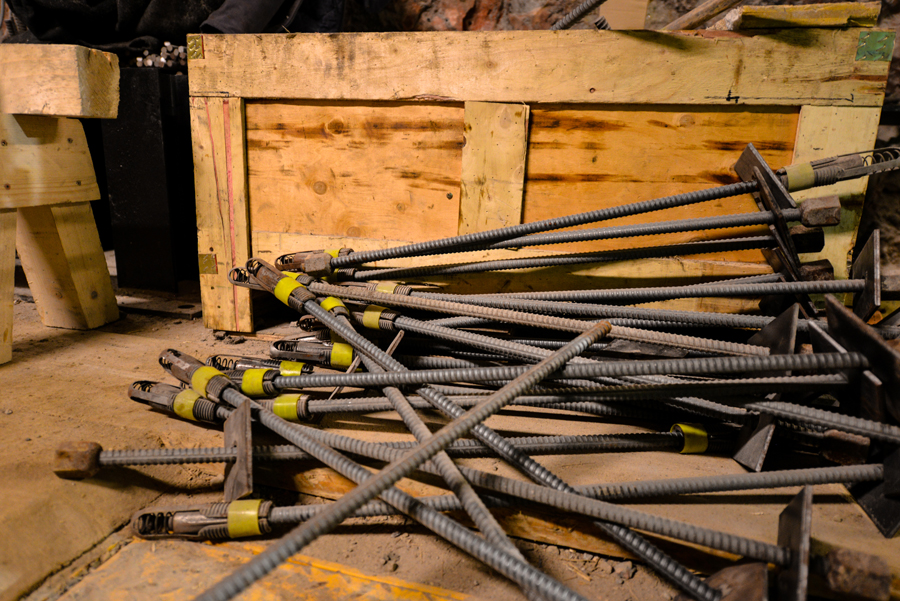






Successful Use of Ground Support Products for the Rehabilitation of a Shaft in the Altausee Salt Mine, Austria
Salinen Austria AG is a leading producer and supplier of evaporated salt derived from brine for a large number of different applications. The company attaches great importance to offering high quality products and services.
One of the traditional mines of Salinen Austria AG is located in Altaussee, Austria. Even today, salt is economically extracted from this mine in the Hasel Mountains, a hybrid geology consisting of sandstone, anhydrite, clay minerals, rock salt and companion salts.
The salt is extracted using solution mining – the most modern and economic method in the world. In the drill probe method, a vertical, 30cm Ø bore is drilled to a depth of several hundred meters from a gallery or an exchanger field. Afterwards, two tube systems are installed into the borehole. Alkaline water is flushed through one of the tubes to the bottom of the borehole in order to dissolve the hydrogenetic rock. In this method, the borehole is widened to form a base cavity. The saturated brine flows upwards in the second tube. Additionally, compressed air is pumped into the borehole, protecting the borehole itself from uncontrolled erosion. Furthermore, the shape and size of the created base cavern can be controlled via the compressed air buffer.
In addition to electricity, compressed air and suitable ventilation, this technique requires pipelines for the alkaline water and the brine. At the Altausee Mine, these supply lines run through a central gallery that is currently undergoing a total rehabilitation.
Currently, rehabilitation work is being carried out in the second section over a length of 26m. In this area, the extraction and supply shaft has to be partly demolished and comprehensively stabilized. First, a concrete gallery wall that had been built a long time ago and that has since deteriorated had to be removed and restabilized. The rehabilitation was carried out while the mine was in operation, and the supply lines in the central shaft had to remain operational during the work.
The inner shaft walls were stabilized using Nirosta mesh with an aperture size of 30 x 30mm. The mesh was installed over the load-bearing rock and anchored in place using 800mm long DSI Expansion Head Anchors consisting of mine support steel, 16.2mm Ø, grade 450/700N/mm², 145kN maximum load. For this purpose, 33-36mm Ø boreholes were drilled and the anchors were installed including anchor nuts and 100 x 100 x 6mm perforated plates.
To stabilize the trusses for the supply lines, DSI Austria produced and supplied 800mm long DSI Resin Anchors consisting of DSI Steel in nominal diameters of 20mm and steel grades of 500/550 N/mm² with ultimate loads of 173kN. The anchors have a yield strength of 157kN. The resin anchors were installed together with 28 x 500mm long resin cartridges with a reaction time of 120 seconds and placed together with domed nuts and 100 x 100 x 6mm solid plates with hole diameters of 35mm.
Although the repair work was much more comprehensive than originally planned, the work is being carried out according to the schedule. Once the second section is completed, the most complex 30m of the 200m deep shaft will be comprehensively stabilized. DSI Austria would like to wish “Glueck Auf” to all miners involved in the work.
